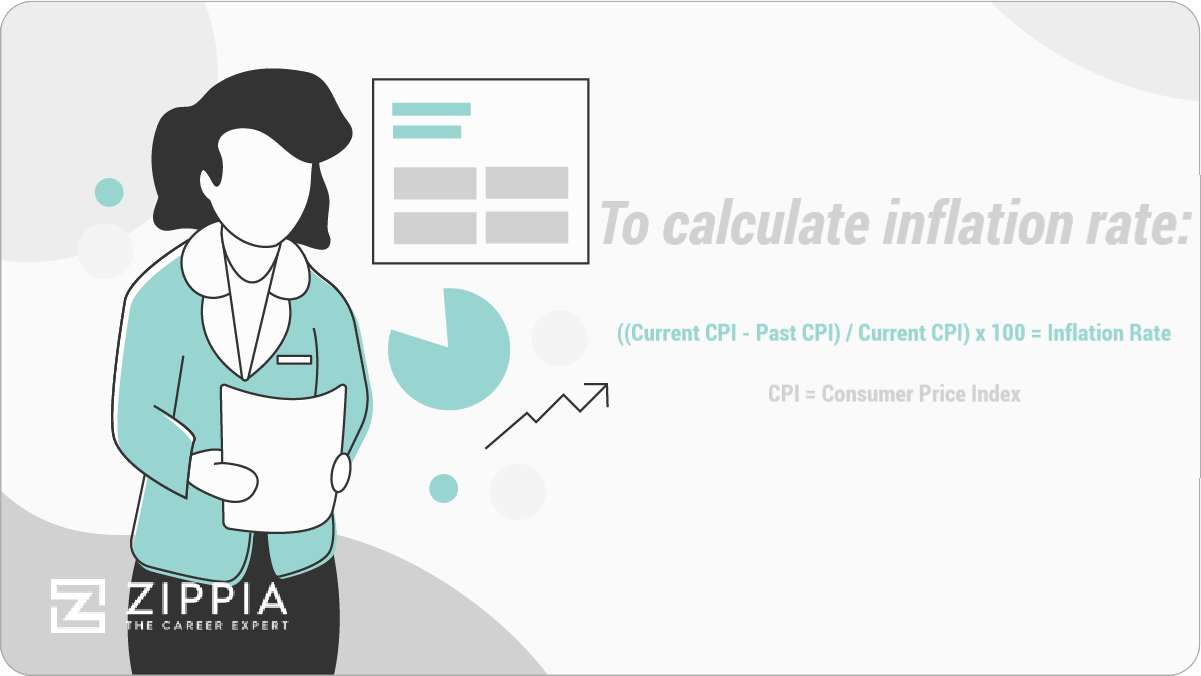- Glossary
- What Is Gross Monthly Income?
- What Is Management?
- What Is A Problem Statement?
- What Is Annual Net Income?
- What Is A Letter Of Transmittal?
- What Is Attrition?
- What Does White Collar Mean?
- What Does Blue Collar Mean?
- What Is Efficiency Vs Effectiveness?
- What Is A Dislocated Worker?
- What Is Human Resource (HR)?
- Thank You Letter Scholarships
- What Is Constructive Criticism?
- What Is A Quarter Life Crisis?
- What Is Imposter Syndrome?
- What Is Notes Payable?
- Types Of Communication
- Economic Demand
- Cost Benefit Analysis
- Collective Bargaining
- Key Performance Indicators
- What Is Gender Bias In A Job Description?
- What Is The Hidden Job Market?
- What Is The Difference Between A Job Vs. A Career?
- What Is A Prorated Salary?
- W9 Vs. 1099
- Double Declining Balance Method
- Divergent Vs Convergent Thinking
- Budgeting Process
- Types Of Intelligence
- What Is Bargaining Power?
- What Is Operating Capital?
- Difference Between Margin Vs Markup
- Participative Leadership
- Autocratic Leadership
- Authoratarian Leadership
- Situational Leadership
- Difference Between Generalist Vs Specialist
- Strategic Leadership
- Competitive Strategies
- Equity Vs Equality
- What Is Marginalization?
- Colleague Vs Coworker
- What Is The Glass Ceiling?
- What Are Guilty Pleasures?
- Emotion Wheel
- Nepotism In The Workplace
- Sustainable Competitive Advantage
- Organizational Development
- Communication Styles
- Contingent Workers
- Passive Vs Non Passive Income
- Choose A Career
- Formulas
- APR Formula
- Total Variable Cost Formula
- How to Calculate Probability
- How To Find A Percentile
- How To Calculate Weighted Average
- What Is The Sample Mean?
- Hot To Calculate Growth Rate
- Hot To Calculate Inflation Rate
- How To Calculate Marginal Utility
- How To Average Percentages
- Calculate Debt To Asset Ratio
- How To Calculate Percent Yield
- Fixed Cost Formula
- How To Calculate Interest
- How To Calculate Earnings Per Share
- How To Calculate Retained Earnings
- How To Calculate Adjusted Gross Income
- How To Calculate Consumer Price Index
- How To Calculate Cost Of Goods Sold
- How To Calculate Correlation
- How To Calculate Confidence Interval
- How To Calculate Consumer Surplus
- How To Calculate Debt To Income Ratio
- How To Calculate Depreciation
- How To Calculate Elasticity Of Demand
- How To Calculate Equity
- How To Calculate Full Time Equivalent
- How To Calculate Gross Profit Percentage
- How To Calculate Margin Of Error
- How To Calculate Opportunity Cost
- How To Calculate Operating Cash Flow
- How To Calculate Operating Income
- How To Calculate Odds
- How To Calculate Percent Change
- How To Calculate Z Score
- Cost Of Capital Formula
- How To Calculate Time And A Half
- Types Of Variables
Find a Job You Really Want In
- How to Calculate the Inflation Rate
- How to Calculate the Inflation Rate Over a Period of Time
- How to Calculate Inflation Rate if It’s More Than 100%
- Examples of Calculating Inflation
- How to Caclulate Inflation Rate Using GDP
- What Is the Inflation Rate?
- The Consumer Price Index
- What Causes Inflation?
- Sign Up For More Advice and Jobs
Ever wondered why your favorite childhood candy seems to cost way more than you remembered? When you look around, everything costs more than it did when you were a kid. The truth is that the value of money is always changing, and sometimes it will trend towards inflation.
Further, the inflation rate is often one of the most important topics when discussing the economy and the value of the dollar. After all, money affects every class and every age.
As a consumer who participates in the economic cycle, knowing the basics of inflation is crucial for understanding the best ways to manage your money. If you can plan for the state of the economy, you’ll have more tools for financial success.
In this article, we’ll explore the nature of the inflation rate and discuss the basic steps for calculating it.

How to Calculate the Inflation Rate
Like any other important economic rate, a formula is used to calculate the inflation rate of a nation or region. Typically, the formula requires a particular starting point, whether that be a year or month in the past, which is then taken from the consumer price index for a specific good or service. Next, the past cost is compared to the current cost of the same good or service.
Simply put, the equation then uses subtraction to find the difference between the two numbers. This difference indicates how much the consumer price index for that specific good or service has increased, which will inevitably show increased inflation.
To then calculate the specific inflation rate, those results are divided by the starting price (the past price, rather than the current price). The result of this calculation will be a decimal, which can easily be converted to a percentage by multiplying it by 100. This percentage will give you the rate of inflation.
Written out, the formula to calculate inflation rate is:
((Current CPI – Past CPI) ÷ Current CPI) x 100 = Inflation Rate
or
((B – A)/A) x 100 = Inflation Rate
How to Calculate the Inflation Rate Over a Period of Time
Though calculating the inflation rate for a certain period of time can feel complicated, the customer price index will aid you and help make your work easier. With the right research, you can figure out how to calculate the inflation rate using the specific dates, the CPI, and historical price records.
With those tools in mind, the following steps can be applied to calculate the inflation rate for any given or chosen period of time:
-
Research. Remember that the CPI represents an average, not specific numbers, so it’s essential to do your own research. Make sure you research the particular items you’re looking to calculate an inflation rate for. After you determine the goods you will be evaluating, gather information on prices during a specific period.
-
Create a chart with CPI information. Using the averages provided by the CPI, you can create a chart that will show you different CPIs from the past and present. Remember, you make the chart as readable as possible to aid in your work efficiency. Doing this will make it easier to use the formula provided in the previous section.
-
Choose a time period. You should use your chart to find and choose the date you’re interested in. You can even pick a future date if you choose because you can use the averages and formula to calculate the information across any given number of months, years, or decades.
Some dates you may want to try and determine the inflation rate for are when you will retire, graduate from school, or have a child. Having a general idea of the inflation rates for these dates will help you budget and plan for the future.
-
Locate the CPIs for the past and current dates. On your data chart, locate the CPI for the good or service that will serve as your starting point (a past date). Then, with the same good or service, identify the CPI for the later date. Often, you’ll want to use the current year or month. After you gather these numbers, they will be the ones you plug into the formula.
-
Plug your numbers into the inflation rate formula. Now that you have your numbers, simply utilize the formula provided. Subtract the past date CPI from the current date CPI and divide your answer by the past date CPI. Afterward, multiply the results by 100 to get a percentage. Your answer will be the inflation rate you’re interested in.
How to Calculate Inflation Rate if It’s More Than 100%
Seeing as the inflation rate indicates an increase in prices, when the average inflation rate reaches 100%, that means the goods and services in question have doubled in price. To help keep information clear, the Bureau of Labor Statistics (BLS) usually selects a new base year when rates escalate over 100%.
However, when you’re doing your own calculations, and the CPI index is over 100%, you can subtract 100 to determine how much prices inflated during that period. Remember that this new number reflects an increase on top of the original price and that the prices have more than doubled.
Examples of Calculating Inflation
-
If Joe bought his morning coffee for $1.25 in 2010, but now he’s paying $1.60 in 2020, he can use this formula to calculate the inflation rate: 1.60 minus 1.25 equals 0.35. Then, dividing .35 by 1.25 equals 0.28. Finally, multiplying 0.28 by 100 equals 28%, so the inflation rate for Joe’s cup of coffee between 2010 and 2020 was 28%.
-
If the CPI shows that a gallon of gas costs $1.06 in 1998 and $2.45 in 2015, we can use these numbers in our formula as well. 2.45 minus 1.06 equals 1.39. Divide 1.39 by 1.06. The results are 1.31. Multiply that by 100. The inflation rate for a gallon of gas more than doubled between 1998 and 2015, as the percentage is over 100 at 131%.
How to Caclulate Inflation Rate Using GDP
Also known as GDP deflator, calculating the inflation rate using a country’s GDP is another way to approach it. To calculate inflation rate using GDP, use the following formula:
Nominal GDP represents an economy’s gross domestic product as evaluated at current market prices. Real GDP is adjusted for inflation, and is sometimes referred to as “constant-price” or “inflation-corrected” GDP.
What Is the Inflation Rate?
The inflation rate is a quantitative measure of the rate at which the average price level of selected goods and services in an economy will increase over a certain period. As a result of this increase, a larger quantity of currency will be required to purchase said goods.
This measurement is generally expressed as a percentage and will indicate a decrease in the purchasing power of a nation’s currency.
With these factors considered, the importance of the inflation rate lies in how it affects the economy. If the average cost of items increases, the currency loses value, and more money is required to acquire the same goods and services as before.
For example, if Tom allocated $500 a month for groceries, but the inflation rate causes the cost of groceries to rise, he would have to increase his grocery budget to afford the same items. In Tom’s case, the inflation rate would compel him to either increase his grocery budget or decrease his groceries’ quantity and/or quality.
That’s why the inflation rate plays a critical role in how you budget your lifestyle and plan for the future. The fact that the value of the dollar fluctuates will impact your cost of living.
Further, regularly keeping an eye on inflation is essential because if there is a steady inflation rate, the adverse effects will lead to slower economic growth.
The Consumer Price Index
One of the main ways inflation is monitored is through the consumer price index (CPI). In essence, the CPI is a measure taken from the average of prices from a hypothetical “basket of goods and services” purchased by consumers. After the price changes of each item are taken, they are then averaged to create a fairly reliable CPI.
Remember that the basket of goods and services includes everyday food items such as milk or coffee, which are regularly affected by inflation. However, food items aren’t the only consumables calculated.
The basket of goods and services, and therefore the CPI, also includes other items consumers must purchase, such as transportation, housing, clothing, recreation, toys, furniture, haircuts, tobacco, and medical expenses. Inflation affects all of these essentials, too, so you should watch out for increasing prices.
Finally, the reported prices per item are completed by the Bureau of Labor Statistics (BLS) on a monthly basis. Keep an eye on these numbers, as they can suggest price trends for essential goods you need.
Ultimately, changes in CPI are important because they’re used to evaluate these changes in essential expenses. With a quantifiable cost of living, periods of inflation in an economy can be determined.
What Causes Inflation?
Inflation is caused by an increase in the supply of money. This can take the form of the Federal Reserve printing more money or, more commonly, by loaning money that doesn’t technically exist as credits through the banking system.
This doesn’t fully explain how inflation happens, though. Economists have broken the phenomenon down to three main drivers:
-
Cost-push inflation. Cost-push inflation happens when the prices of labor and raw materials increase. The cost of production goes up, so the cost of the final product goes up. In this scenario, the product is just as in-demand as it was before, so manufacturers can safely pass on the added costs of production to consumers.
Cost-push inflation is somewhat predictable, as you can count on workers to demand higher wages as the cost of living goes up and you can expect resources to cost more as they become more scarce.
Other forms of cost-push inflation are more radical and unpredictable, such as a natural disaster shutting down an industry’s ability to acquire enough raw materials to continue production at the same pace.
-
Demand-pull inflation. Demand-pull inflation relates to prices going up due to the supply of certain goods not being able to keep up with an increase in demand for those goods. As more people have money to afford these products, prices go up.
Demand-pull inflation can happen in response to a strengthening economy with confident consumers, so it’s not necessarily a bad thing. You can think of demand-pull inflation as getting the ball rolling, while cost-push inflation is the result of that momentum continuing.
-
Built-in inflation. Built-in inflation refers to an almost self-fulfilling prophecy of economics. People intuitively know that things are getting more expensive, and so want higher wages to keep up. Those higher wages in turn drive up the cost of production, which increases your cost of living.
It’s a never-ending cycle, but built-in inflation isn’t unhealthy in incremental doses.
- Glossary
- What Is Gross Monthly Income?
- What Is Management?
- What Is A Problem Statement?
- What Is Annual Net Income?
- What Is A Letter Of Transmittal?
- What Is Attrition?
- What Does White Collar Mean?
- What Does Blue Collar Mean?
- What Is Efficiency Vs Effectiveness?
- What Is A Dislocated Worker?
- What Is Human Resource (HR)?
- Thank You Letter Scholarships
- What Is Constructive Criticism?
- What Is A Quarter Life Crisis?
- What Is Imposter Syndrome?
- What Is Notes Payable?
- Types Of Communication
- Economic Demand
- Cost Benefit Analysis
- Collective Bargaining
- Key Performance Indicators
- What Is Gender Bias In A Job Description?
- What Is The Hidden Job Market?
- What Is The Difference Between A Job Vs. A Career?
- What Is A Prorated Salary?
- W9 Vs. 1099
- Double Declining Balance Method
- Divergent Vs Convergent Thinking
- Budgeting Process
- Types Of Intelligence
- What Is Bargaining Power?
- What Is Operating Capital?
- Difference Between Margin Vs Markup
- Participative Leadership
- Autocratic Leadership
- Authoratarian Leadership
- Situational Leadership
- Difference Between Generalist Vs Specialist
- Strategic Leadership
- Competitive Strategies
- Equity Vs Equality
- What Is Marginalization?
- Colleague Vs Coworker
- What Is The Glass Ceiling?
- What Are Guilty Pleasures?
- Emotion Wheel
- Nepotism In The Workplace
- Sustainable Competitive Advantage
- Organizational Development
- Communication Styles
- Contingent Workers
- Passive Vs Non Passive Income
- Choose A Career
- Formulas
- APR Formula
- Total Variable Cost Formula
- How to Calculate Probability
- How To Find A Percentile
- How To Calculate Weighted Average
- What Is The Sample Mean?
- Hot To Calculate Growth Rate
- Hot To Calculate Inflation Rate
- How To Calculate Marginal Utility
- How To Average Percentages
- Calculate Debt To Asset Ratio
- How To Calculate Percent Yield
- Fixed Cost Formula
- How To Calculate Interest
- How To Calculate Earnings Per Share
- How To Calculate Retained Earnings
- How To Calculate Adjusted Gross Income
- How To Calculate Consumer Price Index
- How To Calculate Cost Of Goods Sold
- How To Calculate Correlation
- How To Calculate Confidence Interval
- How To Calculate Consumer Surplus
- How To Calculate Debt To Income Ratio
- How To Calculate Depreciation
- How To Calculate Elasticity Of Demand
- How To Calculate Equity
- How To Calculate Full Time Equivalent
- How To Calculate Gross Profit Percentage
- How To Calculate Margin Of Error
- How To Calculate Opportunity Cost
- How To Calculate Operating Cash Flow
- How To Calculate Operating Income
- How To Calculate Odds
- How To Calculate Percent Change
- How To Calculate Z Score
- Cost Of Capital Formula
- How To Calculate Time And A Half
- Types Of Variables





